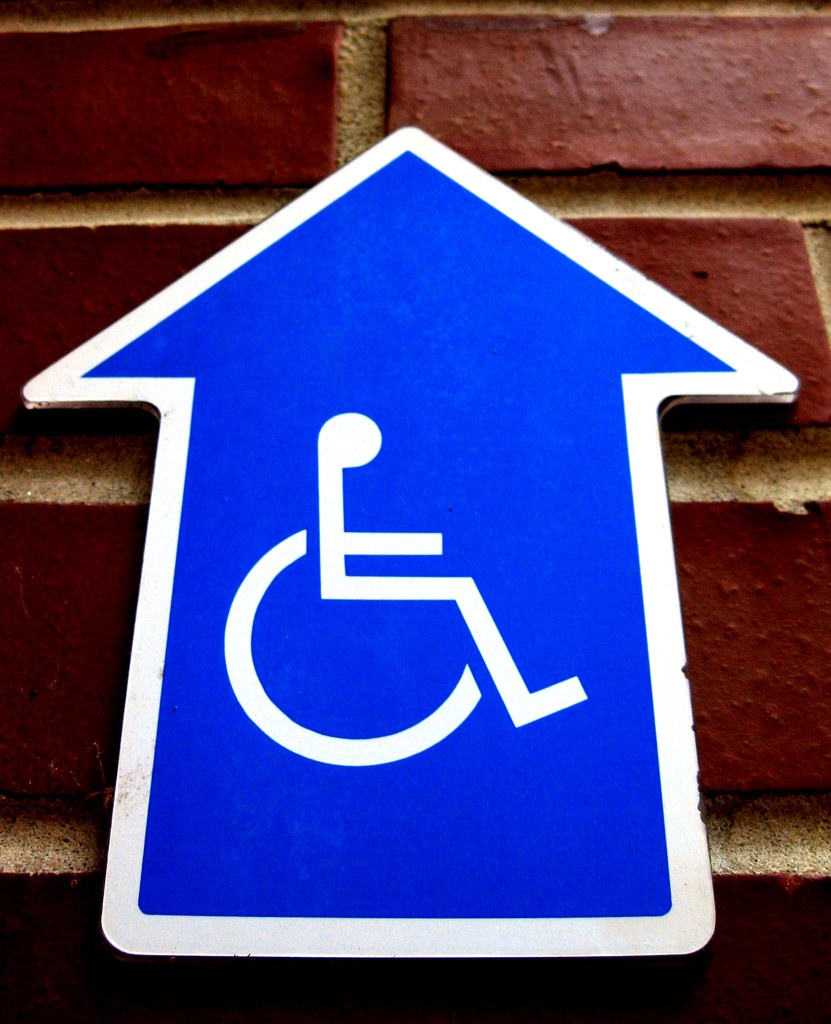Website accessibility for the visually impaired has been one of the thornier legal issues that has arisen over the last decade or so. This is because the federal Americans With Disabilities Act (“ADA”) requires that all places of “public accommodation” be accessible to those with disabilities. However, it was a debatable legal question about whether the ADA applied to websites. In general, a business must make accommodations to its business location, like a store or office, to make the location accessible. Thus, a business might need to build a ramp or an elevator for those in wheelchairs or for those who have difficulty walking.
The “thorny” part of applying the ADA to websites is the fact that websites do not exist in the real world; they are not physically located anywhere that can be accessed. Initially, the courts held that the ADA did not apply to the world wide web because the ADA applied only to physical locations. For example, in a case from 2000, the Ninth Circuit held that the ADA did not apply to an insurance company that provided its policies through an employer. Because the employer-provided policy was not a good or product offered by the insurance company at a physical office, the ADA did not apply to the insurance company. See Weyer v. Twentieth Century Fox Film Corp., 198 F.3d 1104 (9th Cir. 2000).
However, over the last decade, courts have moved away from a bright line rule with respect to the ADA and how it applies to non-physical locations. A recent decision from the Ninth Circuit is a good example of the current state of the law with respect to website accessibility. See Domino’s Pizza, LLC v. Robles, 913 F.3d 898 (2019). In Robles, the plaintiff, Guillermo Robles, is a blind man. He sued Domino’s Pizza alleging that he accessed Domino’s website and mobile phone app with the intention of ordering a pizza. He was unable to order his pizza because the Domino’s website and mobile app were not accessible to the blind. Robles alleged that this non-accessibility violated the ADA (and various California state statutes). The court agreed and ruled in favor of Robles.
The general rule established by Robles and now commonly accepted across the country is that any website operated by a business must be accessible to the visually impaired if the website is used in connection with or used to “drive traffic to” a physical location. The court’s reasoning is this: the ADA requires that the disabled are entitled to “full and equal access” with respect to places of public accommodations. Since websites facilitate access and drive traffic to physical locations, to have “full and equal access” to those physical locations, websites must be ADA-compliant and be accessible to the visually impaired. Examples of how a website might “drive traffic” to a physical location include the availability of web-based coupons/discounts, the ability to use the website to order merchandise to be picked up from the physical store, and more.
There are a couple of other interesting parts of the Robles opinion. Domino’s tried to defend the case by making several arguments. First, Domino’s argued that its due process rights under the Fourteenth Amendment were violated because it had no foreknowledge that it had to make its website accessible to the blind. The trial court agreed, but the Court of Appeals rejected the argument. The Court of Appeals cited about ten cases that, in some way, forewarned businesses that web accessibility is a legal requirement. (As an aside, this is one reason that it is essential for businesses to keep abreast of legal trends and to be aware of important cases from all around the country.) Domino’s also argued that it’s due process rights were violated because it was being forced to comply with what are called the Web Content Accessibility Guidelines (“WCAG”). The WCAG are a privately created set of regulations established by a not-for-profit advocacy group. Domino’s argued that it cannot be forced to comply with regulations created by a non-governmental entity. The court rejected the argument noting that Domino’s was being required to comply with the Court’s order (not private-party rules), that the trial court relied on more than the WCAG to fashion its remedy and that court’s have long had full latitude to find guidance in publicly and privately-created guidelines.
For businesses, the legal lessons are clear: if your website drives traffic to your physical location, you must make your website accessible to the blind. The obligation is an ongoing obligation as technology changes. These general suggestions can be offered:
- Build accessibility into your website from the beginning — this saves cost since it is more expensive to rebuild
- Update your accessibility coding and site structure as routinely as you update other aspects of your website
- Train your IT employees about the importance of and need for accessibility protocols
- Prepare for the need to make video more fully accessible — technology is evolving and making this easier and less costly
- Run routine tests
- Follow evolving legal trends
For more information or if you have questions about your company’s legal responsibilities under the ADA, contact the trusted business and internet lawyers at Revision Legal at 231-714-0100.




